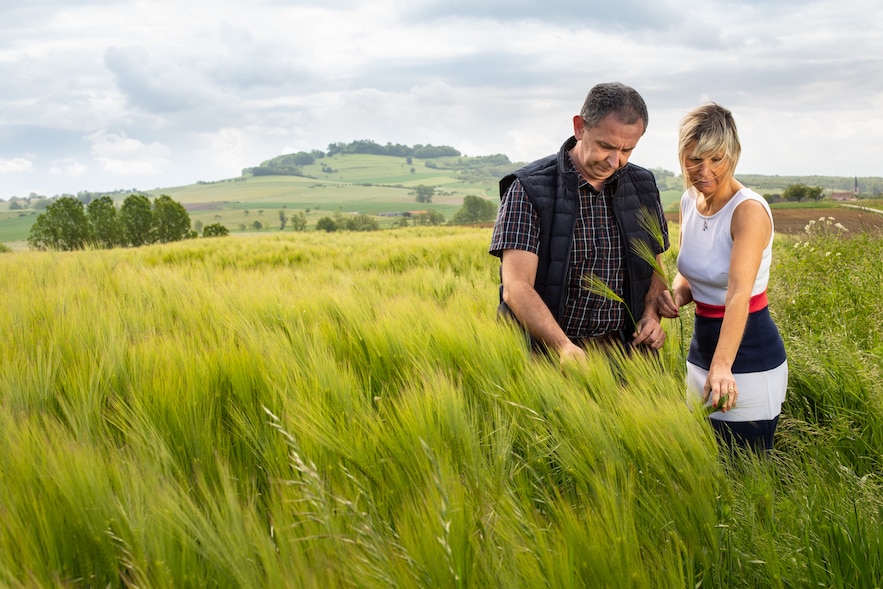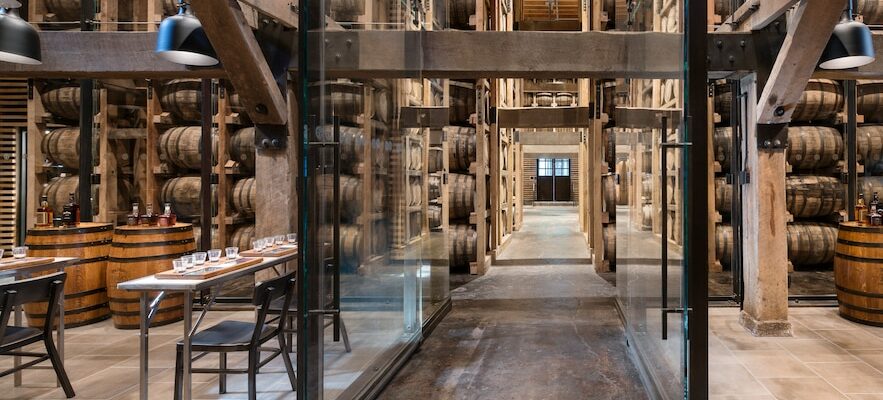Who from Ireland or Scotland deserves the title of birthplace of whisky? Was pisco born in Peru or Chile? And rum in Barbados? The spirit of the place stirs the world of wine and spirits. Throughout France, winegrowers never tire of exploring the richness and diversity of their terroirs. Knowledge and understanding of origins remains the best way to be… original.
Scotland and Ireland, where it all began
Who is the author of whiskey? This real subject of discord between Scotland and Ireland is still not resolved, even if historians generally agree that it all began on the Green Island and developed into ancient Caledonia. But if the first written record mentioning a distillation technique of uicge beatha (brandy in Irish Gaelic) dates back to 1324, there is no indication that it was used to make a distant ancestor of whiskey. On the other hand, in 1494, the Chancellor of the Exchequer of the Kingdom of Scotland granted the right to distill 1,225 kilos of barley to a monk from Lindores Abbey, in Fife, to produce aqua vitae which, unaged, should hardly resemble a single malt!
A century later, the production of brandy is no longer a monastic privilege; it passed into the hands of the brotherhood of surgeon-barbers of Edinburgh. Technical developments (double distillation in particular) improve quality and demand is growing. It did not take long for barrels to be sent internationally from the port of Campbeltown which would become, at the dawn of the 20th century, a mecca for the production of single malt with its 29 distilleries. Ireland is not left out. In 1608, Sir Thomas Phillips was granted a royal license to distill near Bushmills, County Antrim. But as in Scotland, following the introduction of taxes, many stills operate clandestinely. There were more than 2,000 in the 17th century, while in the land of the Scots, managers hunted down undeclared installations, except on Islay where they grew like mushrooms in the four corners of the island. It was not until 1779 that Bowmore, the first official distillery, was founded. And since 1755, the word whiskey has been referenced in the dictionary of the famous writer Johnson first written uisce, Then usky.
After much technical trial and error and an early Wild West atmosphere, Scotland and Ireland rationalized their methods. The distillation continues (patent still), patented in 1826 by Robert Stein (Kilbagie Distillery), was quickly adopted by other whiskey makers, four years before the Irish Aeneas Coffey launched a column still (coffee still) more efficient. Another revolution is coming to the United Kingdom, with the adoption of Forbes Mackenzie Act, which authorizes the blending of whiskey barrels of different ages from the same distillery. We are then in 1853 and seven years later, the Spirit Act allows malt spirits to be mixed with grain spirits: the advent of blended whiskeys, economically more affordable, marks a first turning point in the emerging industry.
During this time, Ireland built a reputation. Its whiskey (with an e to mark its difference) sells much more than scotch in the United Kingdom and the United States. Alas, the Irish War of Independence (1919-1921) caused an English embargo on the island’s products and American Prohibition (1920-1933) deprived Irish Whiskey of its main markets. Most factories then closed their doors; only one operator, Irish Distillers Ltd, remained in 1966. While Scotland was developing a new weapon: single malt.
Firmly anchored in the current landscape, this stroke of genius dates from the early 1960s when Glenfiddich bottled its own malt while Scottish production was almost exclusively devoted to blended whisky. Although this category remains in the majority, single malts still fuel the imagination of lovers of premium eaux-de-vie, who have since tasted the joys of limited editions. (single cask, small batch, etc.). A strategy that is also successful in whiskey, in full revival with the opening of new distilleries and increasing sales – at a time when those of its neighboring competitor are declining. But the end of the match is far from being whistled.
Jack Daniel’s dominates the Tennessee whiskey market
© / Andrew Pogue / SDP
American taste
It’s a story of pioneers. That of Scottish and Irish immigrants who fled their lands due to famine or religious persecution. The first arrivals distilled local fruits, apples, peaches, plums, before moving on to molasses and producing rum. From 1620, in Virginia, a certain George Thorpe became interested for the first time in corn, which would become the cereal of choice for bourbon – today he must have at least 51% of it in his mash bill (the recipe), the rest being divided between wheat, barley, malted or not, and rye. The percentages of each ingredient naturally influence the final flavor. Corn is inherently sweet, rye (rye) brings its fruity and spicy aromas, and the wheat of sweetness. According to its recipe, bourbon, produced in Kentucky, presents great diversity. Which does not lack charm, especially since Rye Whiskey is also produced there (51% minimum rye). A category that is surprisingly on the rise, with its dry and spicy side. SirDavis, one of the latest references to arrive on the market, is co-signed by singer Beyoncé and Bill Lumsden. That one of the best Scottish master distillers (Glenmorangie, Glen Moray, Ardbeg) is venturing there says a lot about its potential…
Finally, what are the differences between Kentucky bourbon and Tennessee Whiskey? The first comes from numerous distilleries, crafts like giants, such as Woodford Reserve, Jim Beam, Buffalo Trace. On the other hand, the second is dominated by Jack Daniel’s, located in Lynchburg. If the production techniques of the two cousins remain identical, Tennessee Whiskey uses the Lincoln county processa process where the distillate is filtered at the outlet of the still on a thick layer of maple charcoal. A unique taste, but a little divisive. J.-PS
Japan: a century to assert itself
The first bottles of whiskey arrived in Japan in the middle of the 19th century and sparked a few vocations, since distilleries appeared in 1871. But it was Masataka Taketsuru, a true visionary, who brought Japanese whiskey to the baptismal font. Descendant of a line of sake brewers going back several generations, he discovered malt brandy at a very young age, thanks to a Scottish classmate exiled in Hiroshima. Masataka then secretly cherished the dream of creating the first Japanese whiskey. But, in 1902, this spirit was considered the devil’s drink by his father, anxious that his son would take over the family brewery.
With only a rather exceptional nose as his baggage, Masataka Taketsuru sets sail for Scotland to study organic chemistry at the University of Glasgow. Between being ostracized by his family, the refusal of local distilleries to hire him because of his origins and the Spanish flu epidemic which is ravaging the United Kingdom, a path bristling with thorns awaits him. Masataka nevertheless ended up training at Longmorn and Hazelburn. In 1920, he returned to Japan with Rita Cowan, a Scottish woman he had married against all odds, and with the intention of introducing the process of making scotch there.
Three years later, he joined Shinjiro Torii, a brilliant importer of Western spirits, to found Yamazaki, the first malt whiskey distillery in the Empire of the Rising Sun. The two men released their first eau-de-vie in 1929, despite the reservations of Masataka, who considered it too far from the Scottish model. They thus marked the beginning of the Suntory label, whose portfolio today includes the brands Hibiki, Yamazaki, Hakushu, The Chita, Toki… The partners separated in 1934 and Taketsuru settled in Yoichi, on the island of Hokkaido. , where climatic conditions are close to those of Scotland. By following his dream – or his obsession – to the end, the enterprising Nippon ended up creating Nikka Whiskey, the other giant of the archipelago, which is celebrating its 90th anniversary this year…
Japanese whiskey then experienced a meteoric rise (“the Izanagi boom”) until 1983, but competition from foreign labels, notably Scottish, put a brake on it. We have to wait until 2009 and the fashion for highball (whiskey plus sparkling water) so business can pick up. With an unexpected consequence: in order to meet demand, distilleries are forced to empty their stocks which they have been trying to replenish since. In any case, Japan is now the fourth largest whiskey producing nation. And she hasn’t said her last word, as this unique style, with its fruity and floral aromas of rare precision, attracts new fans every day. J.-PS
The divine French surprise
What if France became the fifth whiskey nation? There is nothing absurd about this question. In 2023, France had some 130 operating distilleries, of which more than 80 are already marketing their production (1,250,000 bottles). Better still, 5% go to export: this is certainly too little to have any influence on the world market, but rather encouraging. Especially since the category is “only” 40 years old. The first traces of cereal distillation appear as early as the 16th century in French medical books. But a decree, published on January 24, 1713, strictly prohibited the production of other brandies (syrup, grain) than grapes. Louis XIV wanted to protect the latter, subject to tough competition from molasses arriving from the colonies…

France, Rozeluieure, Sabine and Christophe Dupic
© / SDP
After a long period of dormancy, the alarm rang in Brittany, in 1983, in Lannion (Côtes-d’Armor). Gilles Leizour takes over the Warenghem family distillery, then renowned for its liqueurs. Keen to diversify, four years later he launched his WB (for Breton whisky) on the shelves of large regional retailers. The trial, which proved to be a success, was transformed in 1998 with the launch of Armorik, the first French single malt. The story continues in Brittany with Guy Le Lay (Eddu) and his whiskey made from buckwheat, a local specificity. From then on, other distilleries emerged in Corsica, Alsace, the North and Lorraine, with Rozelieures, now the leading single malt reference in France. Cognac then took over and, today, malted brandy producers are multiplying throughout France. Fundamentally artisanal, French whiskey also knows how to innovate, in terms of aging or through a piecemeal approach. A welcome breath of fresh air for the category. This is not the least of its merits. J.-PS
The planet is becoming completely malted
If whiskey has already successfully invested in Scandinavia (Mackmyra) and Taiwan (Kavalan), other territories are emerging. Heavyweights, like India, the world’s fourth largest spirits market: local single malts from Amrut are making a name for themselves – 345,000 cases were sold in 2023, compared to 330,000 imported, a first! And we now have to take into account China, where people under 40 consider whiskey more attractive than cognac or baijiu, the national alcohol and the most consumed in the world. Forecasts predict an 88% increase in sales by 2026! Especially since the Middle Kingdom is getting involved. With French groups at the forefront. Pernod-Ricard has already presented its Chuan Pure Malt Whiskey produced in its Emeishan distillery, when the Camus cognac house is embarking on the construction of the Guqi distillery in Bozhou, in collaboration with Gujinggong, the fourth largest baijiu producer.. No doubt, whiskey continues to conquer the world. J.-PS
> Whiskey: Find our selection of the best whiskeys in the world for the holidays on L’Express.fr
